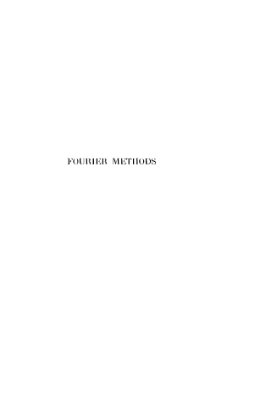McGraw-Hill, 1949. - 292 pages.
This book is an introduction to Fourier series and Laplace transforms. Applications to physical problems involving ordinary and partial differential equations are included. The reader is assumed to have a working knowledge of elementary calculus, but where topics of advanced calculus are needed, they are developed from the beginning. Thus the discussion may help students and technologists to understand works in their field written in terms of harmonic analysis, complex exponentials, Fourier integrals, Fourier transforms, and Laplace transforms. The book is also suitable for use as a class text. Experience indicates that most of the topics can be covered in a one-semester course and that the material appeals particularly to applied mathematicians, engineers, and physicists.
The method of Fourier is interpreted here in a broad sense as referring to any analysis or synthesis of functions by a linear process applied to sines, cosines, or to complex exponentials. The initial chapter deals with complex quantities. It shows how to compute the elementary functions for complex values of the argument and how to read charts for finding such values approximately. It also explains what "complex impedance for a given frequency" means, and how to find it for a simple electrical or mechanical circuit.
This book is an introduction to Fourier series and Laplace transforms. Applications to physical problems involving ordinary and partial differential equations are included. The reader is assumed to have a working knowledge of elementary calculus, but where topics of advanced calculus are needed, they are developed from the beginning. Thus the discussion may help students and technologists to understand works in their field written in terms of harmonic analysis, complex exponentials, Fourier integrals, Fourier transforms, and Laplace transforms. The book is also suitable for use as a class text. Experience indicates that most of the topics can be covered in a one-semester course and that the material appeals particularly to applied mathematicians, engineers, and physicists.
The method of Fourier is interpreted here in a broad sense as referring to any analysis or synthesis of functions by a linear process applied to sines, cosines, or to complex exponentials. The initial chapter deals with complex quantities. It shows how to compute the elementary functions for complex values of the argument and how to read charts for finding such values approximately. It also explains what "complex impedance for a given frequency" means, and how to find it for a simple electrical or mechanical circuit.

